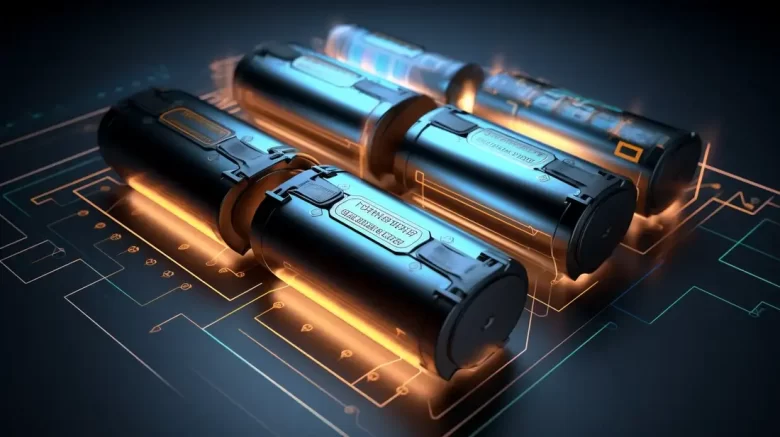As the global climate crisis intensifies and dependence on fossil fuels becomes increasingly unsustainable, green technology has become the key to a sustainable future. Innovation in next-generation batteries is a key driver of this progress. These innovations not only impact energy storage and consumption but also the scalability of smart grid infrastructure, renewable energy, and electric vehicles (EVs).
The world is experiencing a dramatic shift toward smarter, faster, and greener batteries, driven by the growing demand for sustainable, efficient, and environmentally responsible energy storage solutions. This article discusses the key developments in battery technology and how they are impacting the advancement of green innovation in many areas. The future is electric, and batteries are the source of that electricity.
Solid-State Batteries: Safe and Efficient Energy Storage for the Future
The development of solid-state batteries is expected to address many of the shortcomings of traditional lithium-ion batteries and is one of the largest advances in battery technology. Solid-state batteries are safer, more stable, and have a higher energy density because they use solid electrolytes instead of flammable liquid electrolytes. These features allow electric vehicles to charge faster and have a longer driving range, two major obstacles to widespread adoption.
In addition, solid-state technology reduces dendrite formation, a common problem in lithium-ion batteries that can cause battery aging and short circuits. QuantumScape, Samsung, and Toyota are leading this revolution and working to commercialize prototypes. Solid-state batteries are expected to revolutionize the consumer electronics, electric vehicle, and electricity storage sectors. If developed at scale, they could double or even triple the lifespan of existing batteries.
Lithium-Sulfur Batteries: Breaking the Energy Density Barrier
Lithium-sulfur (Li-S) batteries are another breakthrough invention. They have an energy density five times higher than that of conventional lithium-ion batteries. This property makes them very attractive for applications such as electric aircraft, drones, and aerospace, where high-performance, lightweight energy solutions are required.
Attention is being paid to the supply chain and environmental issues associated with mining cobalt and nickel for lithium-ion production due to their abundance of sulfur, affordability, and environmental friendliness. While issues such as capacity loss and cycle life still exist, recent advances in electrode design and material stability have significantly improved their performance and durability. As research into lithium-sulfur batteries continues, they are expected to become a popular alternative for lightweight, high-capacity energy storage.
Sodium-Ion Batteries: A Sustainable and Affordable Alternative
As the demand for battery materials increases due to the geographic concentration and scarcity of lithium, scientists are seeking alternatives, such as sodium-ion batteries. Because sodium is geographically widespread and much more abundant than lithium, it is a more economical and sustainable option for large-scale applications.
Sodium-ion batteries operate similarly to lithium-ion systems, although their energy density is slightly lower. Yet, their excellent thermal stability, lower production costs, and environmental friendliness make them ideally suited for stationary storage, grid applications, and growing markets. Contemporary Amperex Technology Co., Ltd. (CATL), one of the world’s largest battery manufacturers, has begun producing sodium-ion batteries, signaling a change in the dynamics of the battery supply chain. While these batteries will not completely replace lithium-ion batteries in high-performance electronics, their scalability and economic viability cannot be ignored.
Extending Battery Life Through Recycling and Secondary Use:
Innovation in the next generation of batteries involves more than just new chemicals; sustainability through recycling and reuse is equally important. With millions of electric vehicles and other electronic devices reaching the end of their lifespan each year, it is essential to dispose of and reuse batteries responsibly. Thanks to advanced recycling technologies such as hydrometallurgy and direct recycling, it is now possible to recover precious metals and raw materials with minimal harm to the environment.
Many EV batteries that no longer meet vehicle performance requirements can also be used for stationary energy storage, including integration of renewable energy or backup power systems. This circular economy strategy can not only reduce waste but also maximize return on investment and minimize the overall carbon footprint of energy storage.
To ensure that battery innovations meet long-term environmental goals, governments and companies are investing in recycling infrastructure. Policies in North America and Europe that promote green design principles and strengthen extended producer responsibility are laying the foundation for a more circular battery economy.
AI and Smart Battery Management: Improving Lifespan and Performance
In addition, modern battery systems are becoming increasingly intelligent. Thanks to a combination of artificial intelligence (AI) and the Internet of Things (IoT), battery management systems (BMS) can now make real-time performance predictions and optimize performance. To deliver optimal performance, safety, and extended battery life, these smart devices use machine learning algorithms to evaluate temperature, usage patterns, and charging cycles.
A smart BMS monitors battery health, predicts issues before they occur, and dynamically adjusts charging protocols for both electric vehicles and grid storage. The result is increased reliability, lower maintenance expenses, and greater customer confidence. As battery technology becomes increasingly complex, such smart systems are critical to the successful implementation of battery technology across industries.
Conclusion:
The next generation of batteries is a paradigm shift in support of the clean energy revolution, not just an improvement. Advances in battery technology, ranging from solid-state and lithium-sulfur technologies to sodium-ion alternatives and AI-driven smart systems, are paving the way for a future where affordability, performance, and sustainability coexist harmoniously. These developments are not limited to research facilities; they are quickly penetrating everyday life, infrastructure, and commercial goods.
These battery advances are the foundation for green technology on the road to a zero-emissions world. They will not only power cars and technology but also the way we live, travel, and care for our planet in the future. If stakeholders across all sectors want to stay ahead of the curve, they must continue to fund infrastructure, research, and strategic implementation. Smarter, cleaner, and more powerful batteries will define the future of energy.
FAQs:
1. What are solid-state batteries, and why are they important?
Solid-state batteries use solid electrolytes instead of liquid electrolytes. This allows them to charge faster, have a higher energy density, and be safer. They are crucial for safer energy storage and the next generation of electric vehicles.
2. What is the difference between lithium-ion batteries and lithium-sulfur batteries?
Lithium-sulfur batteries use cheaper, environmentally friendly ingredients like sulfur and offer a higher energy density. However, they still have issues with stability and longevity.
3. Are lithium-ion batteries worse than sodium-ion batteries?
Although sodium-ion batteries are more common and less expensive, especially for large-scale use, their energy density is currently slightly lower than that of lithium-ion batteries.
4. Is it possible to reuse old EV batteries?
Second-life applications can extend the life of old EV batteries, allowing them to be used in home backup systems, grid storage, and other applications.
5. How can artificial intelligence improve battery efficiency?
Battery management solutions based on artificial intelligence improve performance and safety and extend battery life by optimizing charging, monitoring status, and predicting failures.




